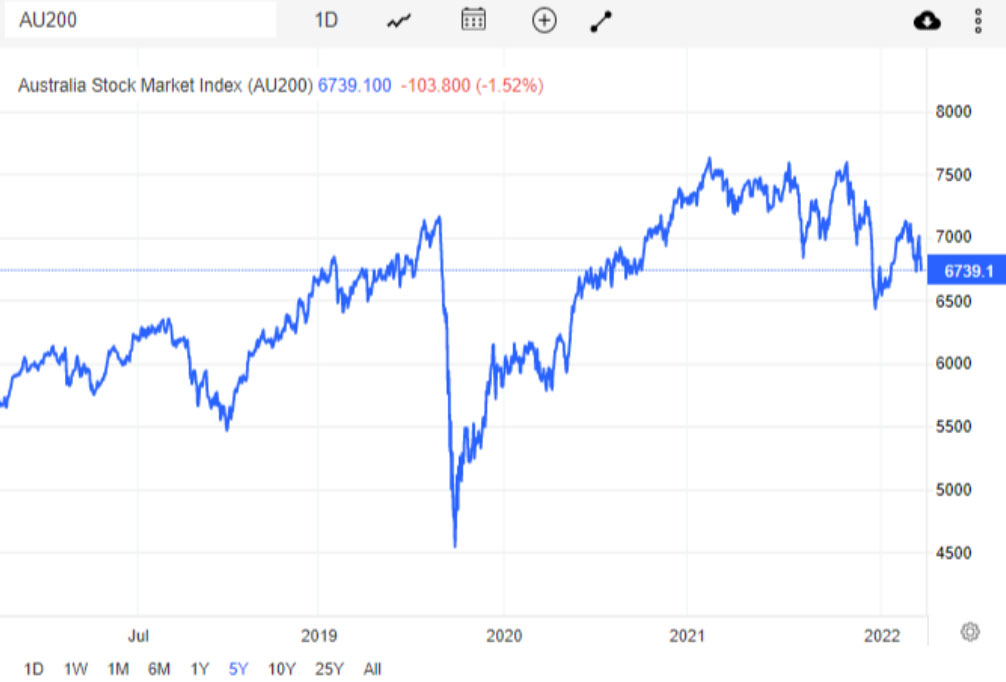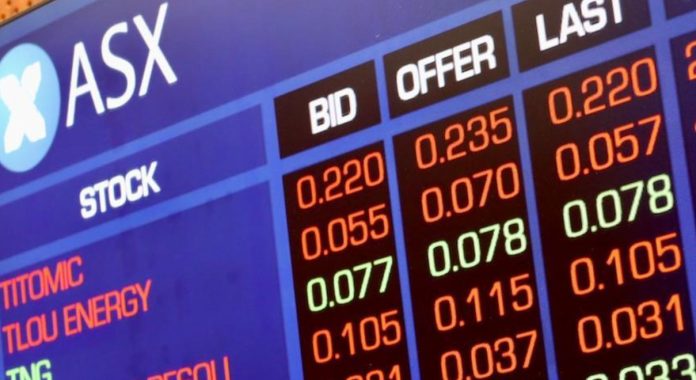AU200 is the main index of the Australian Securities Exchange, and it’s calculated based on the stock prices of the 200 largest companies that trade on the exchange. After months of bleeding, the index managed to rally and even close about 6% higher in July. That rally culminated in the highest close by mid-August, something that had not been witnessed in almost three months. But, the recent bounce hasn’t been enough to erase year-to-date (YTD) losses which, as of the time of writing, stand at almost 9%.
What does the future hold for this index? If you plan to buy and sell AU200 index, this piece is for you. It will explore the historical performance and analysts’ expectations to determine if the AU200 index is the best to trade before the end of the year.
AU200 Index Role And Historical Performance
The AU200, better known as S&P/ASX 200 index, is used to track the performance of the 200 largest companies listed on the Australian Securities Exchange (ASX). Companies are listed on the index based on their float-adjusted market capitalization.

The chart above shows the historical performances of the AU200 index. It fell to its lowest point in 2020 during the coronavirus pandemic culminating in a low of 4,394.6 points on March 22. But, after that, the index would bounce back and record gains in the next 16 out of 17 months. By August 2021, the index had recorded gains of almost 75% from its pandemic low, thus reaching an all-time high of 7,632 points. As highlighted earlier, the index has lost almost 9% over the past year as quantitative tightening and fears of a slowing global economy have hurt equity markets.
Straight losses were recorded between April and June for three months as the Reserve Bank of Australia (RBA) embarked on its first interest rate hike in over 11 years.
What Factors Are Influencing AU200 Index Price Performance?
There are a few factors that influence the price performance of the AU200 index, including:
Inflation and interest rates
This year has turned out to be the year of rising inflation and interest rate hikes. Decades of rising inflation have left most governments with no choice but to increase the interest rates to combat the problem. Last month, Australia’s RBA raised rates for the 4th consecutive month with a 50 basis points (bps) hike.
Sector performance
The real estate sector in Australia has been among the worst performing sectors this year. As of mid-last month, the index that tracks the real estate in the nation had lost over 17% YTD compared to the overall AU200 index fall of about 6% at the time. Interest rate hikes have affected the property market in the nation as households experience higher mortgage interest payments. The dismal performance has affected the overall index as the real estate sector had the fourth largest weight in AU200 at 6.7% as of July.
What Does The Future Hold For The AU200 Index?
Data from Trading Economics forecasts that the Australian benchmark index was expected to fall to 6,867 points by the end of the September quarter. Also, the index could trade at 6,396 points by August next year. The AU200 forecast for the remainder of the year is likely to be affected by inflation and interest rate hikes that increasingly seem likely to dominate market proceedings.
Last month, JP Morgan recommended an “underweight” rating for Australia in its equity strategy regional calls before noting that it was taking a cautious approach when it came to Switzerland, Australia, and HK. BlackRock, an American multinational investment company, advised caution within the same period. Amid last month’s rally, they noted that stocks were rallying since markets believed inflation was waning and the Fed would slow hikes soon. But, they didn’t think the rally was sustainable as they foresaw the Fed hiking rates to levels that would stall the economic restart.
That said, these forecasts can be wrong, and there is no telling what the market will do at any given time. This is where due diligence comes in.
Disclaimer: This article contains sponsored marketing content. It is intended for promotional purposes and should not be considered as an endorsement or recommendation by our website. Readers are encouraged to conduct their own research and exercise their own judgment before making any decisions based on the information provided in this article.



























![“Does Everyone Hear Me OK?”: How to Lead Virtual Teams Effectively iStock-1438575049 (1) [Converted]](https://www.europeanbusinessreview.com/wp-content/uploads/2024/11/iStock-1438575049-1-Converted-100x70.jpg)




